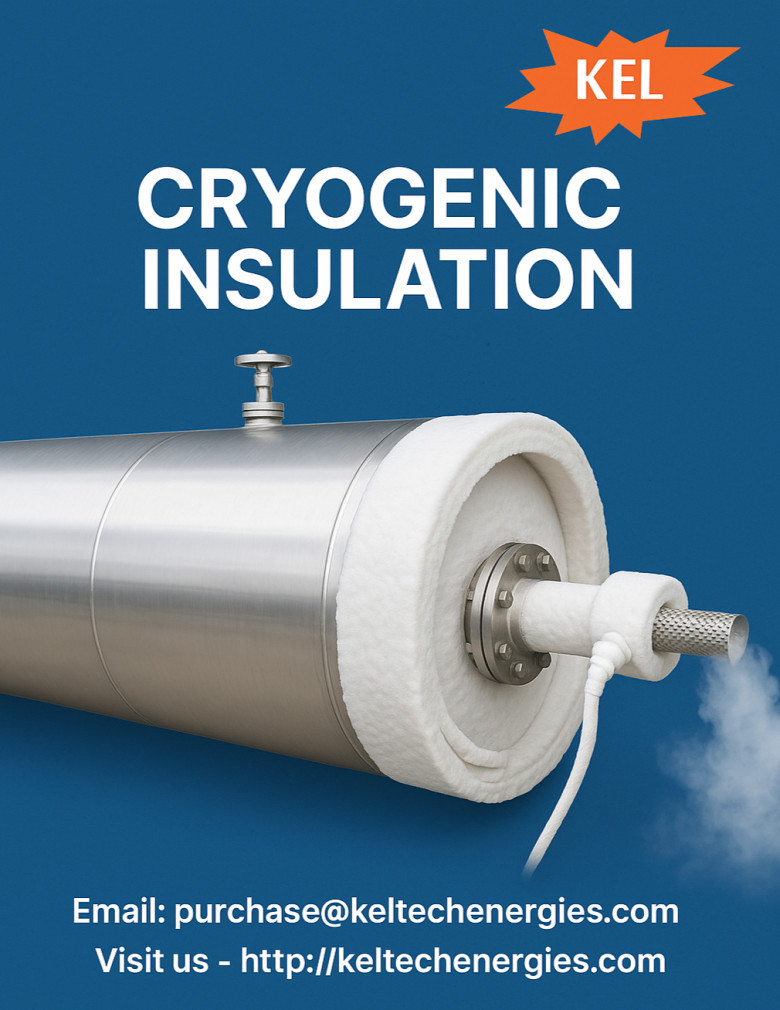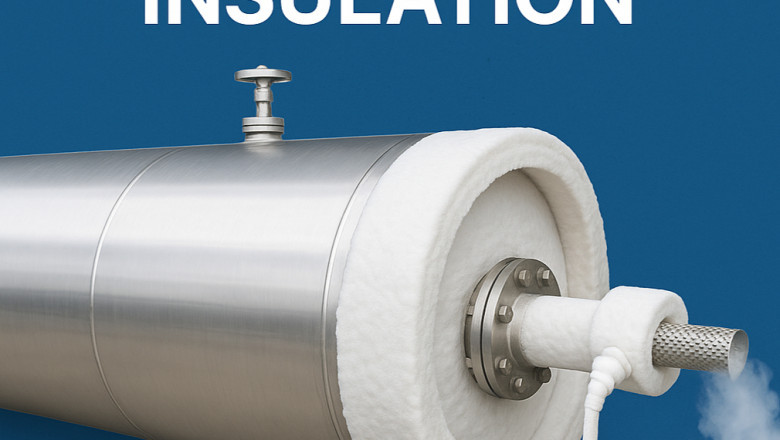views

In industries where temperatures can drop to extremely low levels, the need for specialized insulation becomes crucial. Cryogenic insulation is the key to preserving the integrity and efficiency of systems exposed to ultra-low temperatures, often as low as -200°C or even lower. Cryogenic insulation plays a vital role in industries like LNG, aerospace, healthcare, and the production of industrial gases. But what exactly is cryogenic insulation, how does it work, and why is it so important?
What is Cryogenic Insulation ?
It encompasses specialized materials and systems engineered to limit heat ingress into machinery or pipelines functioning at extremely low temperatures. These low temperatures are typically found in the storage and transportation of liquefied gases such as nitrogen, oxygen, argon, and LNG. Without proper insulation, these substances would quickly evaporate or lose their structural integrity due to heat ingress.
Traditional insulation methods do not perform well at these extreme temperatures. Instead, cryogenic insulation requires a combination of advanced materials and engineering techniques to reduce thermal conductivity and maintain safety and efficiency.
Why is Cryogenic Insulation Necessary?
The importance of cryogenic insulation cannot be overstated in applications involving extremely cold substances. For example:
- Energy Efficiency: Cryogenic systems must maintain specific low temperatures. Insufficient insulation allows heat to enter the system, requiring more energy to keep materials in their liquid state.
- Safety: Gases like LNG or liquid hydrogen can be hazardous if they warm up and expand rapidly. Proper insulation prevents unexpected pressure build-up and reduces the risk of explosions or leaks.
- Cost Savings: Evaporation loss in liquefied gases can be expensive. High-performance cryogenic insulation helps cut down on material losses and keeps overall operational expenses lower.
- System Longevity: Temperature fluctuations can damage pipelines and containers. Quality insulation helps prevent thermal stress and material fatigue.
Types of Cryogenic Insulation Materials
Cryogenic insulation involves a variety of materials and methods, depending on the specific application and environment. Some of the most commonly used cryogenic insulation materials include:
- Perlite
Perlite, a low-density volcanic glass, is commonly utilized in vacuum-insulated tanks for cryogenic storage due to its thermal efficiency. It provides excellent thermal resistance and is cost-effective for large-scale insulation. - Foam Glass
This rigid, closed-cell material offers excellent moisture resistance and can withstand cryogenic temperatures without breaking down. Foam glass is commonly used in both above-ground and underground cryogenic pipelines. - Multilayer Insulation (MLI)
MLI is a high-performance solution consisting of multiple layers of reflective film separated by spacers. It is often used in vacuum-jacketed systems and space applications where minimizing radiant heat transfer is critical. - Polyurethane Foam (PUF)
PUF is widely used for insulating cryogenic tanks and pipelines. The material’s closed-cell composition effectively blocks heat transfer and resists moisture penetration. - Aerogel
Known as one of the most efficient insulating materials, aerogels offer extremely low thermal conductivity and are ideal for compact cryogenic systems where space is limited.
Applications of Cryogenic Insulation
The applications of cryogenic insulation span multiple industries, each with unique needs and specifications:
- Liquefied Natural Gas (LNG): One of the most common uses of cryogenic insulation is in LNG plants, where maintaining low temperatures during storage and transport is vital.
- Aerospace: Space missions involve cryogenic fuels such as liquid hydrogen and oxygen. Cryogenic insulation ensures these fuels remain at their required temperatures throughout the mission.
- Healthcare and Pharmaceuticals: Cryogenic storage is essential for preserving biological samples, vaccines, and certain medications. Insulated cryogenic containers are used in hospitals and laboratories worldwide.
- Industrial Gases: Facilities that produce and store gases like nitrogen or argon require extensive insulation to maintain efficiency and safety.
Challenges in Cryogenic Insulation
While the science behind cryogenic insulation is well established, several challenges remain:
- Material Selection: Not all insulation materials perform well under cryogenic conditions. Choosing insulation materials requires engineers to consider a careful balance of efficiency, longevity, affordability, and sustainability.
- Installation: Proper installation is critical. Even high-quality materials can underperform if installed incorrectly, leading to cold spots or heat leaks.
- Aging and Maintenance: Over time, insulation can degrade due to moisture intrusion, mechanical damage, or thermal cycling. Ongoing maintenance is crucial for preserving the insulation’s effectiveness over time.
The Future of Cryogenic Insulation
As industries push for greener energy solutions and more advanced medical technologies, the demand for high-performance cryogenic insulation is expected to grow. Research continues into nanotechnology, bio-based insulation, and enhanced manufacturing techniques to create lighter, more efficient, and environmentally friendly insulation systems.
In conclusion, cryogenic insulation plays a critical role in modern industrial and scientific applications. By preventing heat transfer at extremely low temperatures, it ensures safety, enhances energy efficiency, and protects valuable materials. Whether it's in the fuel tanks of a space shuttle or the storage units of a hospital, cryogenic insulation is an invisible yet indispensable part of our coldest technologies.














Comments
0 comment